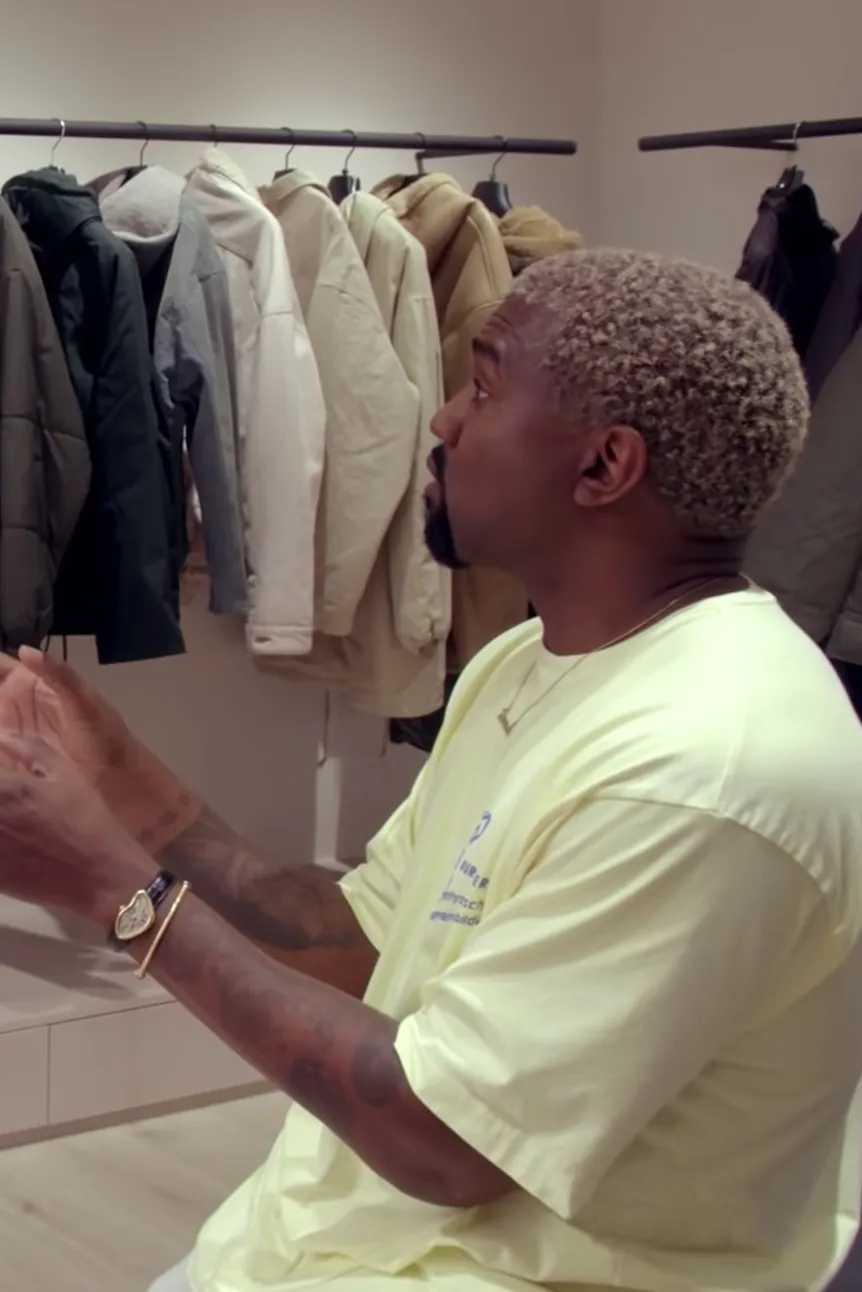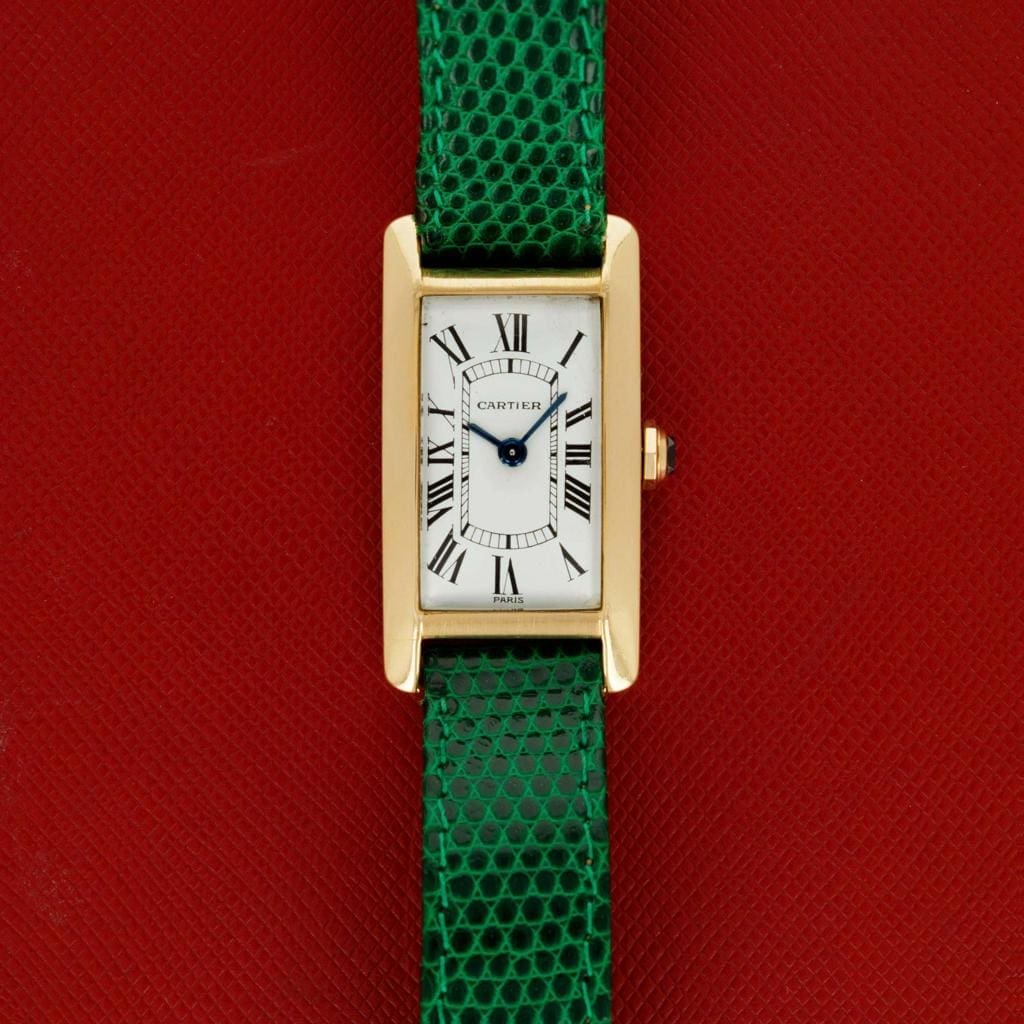Cartier fanatics rejoice! Loupe This is auctioning a treasure trove of vintage rarities this week
Zach BlassIt’s easy to understand the dangerous appeal of online auction platform, Loupe This. For a start, it’s co-owned by internationally renowned watch dealer / super-collector, Eric Ku (read this story about his crazy life here). As a result of his know-how and connections, the product on offer is always intriguing.
“What we want to do, is captured in our tagline – ‘Rare, valuable and interesting watches, verified and available to the highest bidder’”, Eric says. “We want to sell things that are rare and valuable, but ‘interesting’ is a really key word there.”
This auction platform’s special focus on Cartier this week certainly lives up to that promise. That’s because Eric has a personal weakness for the brand – he owns a complete set of the Cartier Crash, a model he describes in this interview as his “favourite watch”.
Ahead of the Loupe This auction, Time+Tide’s Zach Blass sat down with Eric to learn more about the rare Cartier pieces becoming available on Loupe This over the following week.
Zach Blass: The Morgan Stanley watch report recently showed that Cartier has now taken the wordwide number two ranking in sales.
Eric Ku: Just eclipsed Omega, I think, right?
ZB: Yes. What do you think has caused this surge in interest in Cartier watches? Is it a result of the vintage pieces being so hot right now?
EK: I think that strategy of so many brands of just re-releasing their greatest hits offers a variable degree of success. Some brands have been very good at it, some brands haven’t. But with Cartier, their playbook is so deep that they do a great job because they have such a long history to draw from
ZB: For sure. Do you think that the saturation of interest in sports watches has led people – especially those who want to be different – to go for these more classic, abstract watch designs? You look at, say, Kanye West wearing the Cartier Crash.
EK: I’ve said a million times that I really believe that good design is just as important as any watch complication. Cartier has that down pat. Their iconic thing is the design. They’re a jewellery house and their goal is just to make beautiful looking objects and they’ve succeeded quite well at that. Plus, if I close my eyes, I can’t imagine Kanye West wearing a Submariner. Can you? Guys like that, they’re design people and there’s nothing more iconic than the Cartier designs.
ZB: Okay. Getting into the Cartier watches being sold in the Loupe This auction, there’s a total of 10 pieces, correct?
EK: Yeah. We’ll have 10 watches spread out over a week, so we’ll put two up every day. This is the Pasha de Cartier golf watch. It’s ironic, you talk about sports watches and you think of a Submariner or something. But this is a sports watch or, in fact, it’s a golf watch. There’s four apertures in the corners to count strokes when you’re playing golf. So you and a foursome of golfers could keep score. It’s such a funky thing.
ZB: That’s really cool because, to me, you look at that watch and you get both the sporty aspect of it, but it would work with a suit as well. It’s very much a cocktail watch that will be a conversation piece.
EK: The next one is a London Tank Louis 1968. For Cartier nerds, the London watches are the most special. In the old days, up until I guess the late ’80s, Cartier operated as separate entities between New York, Paris and London. The London workshop was responsible for some of the coolest designs of the ’60s and ’70s, like the Crash, for example.
London was really different. The way the British did things was that everything was built on order. It was completely inefficient, but from a collector’s standpoint, everything was really handmade, really bespoke. It’s interesting because you could have two Tank Normales, say, that were made one after the other, sequentially in terms of their serial numbers. But there are just slight variances in the manufacturing, because they were handmade.
The Deployant clasp, for example, consists of two pieces that are put together. You’d think these would just be manufactured in bulk – that they’d have an entire bin full of them. But they were all handmade. If you took the two blades of a Deployant from two different watches, they might not fit together because they were all made one at a time. It’s crazy!
ZB: That’s interesting, because I was going to ask later: which is the most coveted Cartier stamp.
EK: London.
ZB: Does that mean that you expect that the London Crash you’re selling will fetch a higher final hammer price than the Paris one?
EK: The London Crash, for sure. That’s the original. The Paris 1991 is a reissue. Talking with Pierre Rainero, who’s the head of the heritage department at Cartier, up until the ’80s there was less than two dozen London Crashes made. They’re really, really, really rare. There hasn’t been a ’60s or ’70s London Crash for sale literally for years. I can’t even think of the last one.
ZB: In terms of the differences between the London Crash and the Paris Crash, what are the nuances of difference?
EK: Okay, so the London case is larger than the Paris case (above). It’s more sensual, if you will. There’s more curvature to everything. The Paris version seems a little more smoothed out.
ZB: When I look at both of them, the London dial looks more hand-done. It looks less perfect, but as a result, more perfect.
EK: Yeah, exactly. That’s another hallmark of the London watches. To be very honest, the dials made in London, the quality was not good. That’s why they’re all kind of janky looking, but again, that’s part of the charm. If you try to set a time to 10 past 10, like I do on all of the images, if you look at that one (below) it doesn’t really look like that.
ZB: Actually, it almost looks like it could be 9:05! But this watch you don’t buy for chronometric accuracy. It’s very Warhol in the sense of it doesn’t matter what time it is on the watch. It’s just the fact that you get to wear it. But Eric you own a few of these London Crashes, so you’ve cornered a certain percentage of the existing stock.
EK: I’ve always loved the Crash – it’s my favourite watch. I’ve loved this watch since before they obtained the prices they have. I understood very early on that these were really special pieces and very iconic designs. In my opinion, it’s the most iconic designed watch. I’ve been fortunate over the years to be able to pick up a few of them for myself. This one here is a fresh watch. It’s previously unknown. I’m really excited to be able to bring this to the world for sale, because I think a lot of people will love it.
On my personal Instagram, for example, every time I post Crashes, I get thousands of likes and people are always DMing me: “Hey, is this for sale? Where do you find these? Where can I get one?” Celebrities reach out. But this is a chance for somebody to get literally, an original London Crash, which doesn’t happen very often.
The next is the Tank Asymmetric platinum that is from 1998 and that Cartier Prive collection. This is what I call the two lug version that I personally prefer It’s an original design that Cartier made famous in the ’30s and ’40s.
Cartier is about design and shapes. They’re like the masters of the not round and not square watch, and this watch just exemplifies that. It’s like an oblique square or a rectangle, if you will, which seems simple in execution, but nobody else really thought about doing it before.
ZB: Then we’ve got another Tank that has, what I would call almost like a yellow brick road kind of bracelet. Except it’s not yellow…
EK: This is a white-gold Tank. It’s a ‘70s watch like the Tank Louis. It has a cool engraving on the back that says 1967 – I believe it was probably commemorating some sort of date. It’s really rare because it comes with that bracelet. These bracelets are very, very rare. Plus for every white gold one, you see 10-20 yellow gold ones, so being white gold in itself is also very unusual.
ZB: Then we’ve got these pieces. Are they Cintrees or Americaines?
EK: Yeah, Cintree. I think the term Cintree and Americaine can be used somewhat interchangeably. But I have called it the Cintree. The first one we can talk about is that yellow gold one on the green strap. It’s from Paris 1974 or ’75. On the back it has that circle protruding out of it because the case is so thin, they needed to have that little bump so that the movement can fit in.
Jumbo Cintrees are really expensive now, as you probably know. And the medium-sized ones, they’re still undervalued.
ZB: When these watches were first created, was the Jumbo available from the outset, or did they evolve from the smaller design?
EK: Yeah, they had them from the ’20s. It’s a weird thing. You think about the 1920s and ’30s when people were wearing these dainty, small watches, so how crazy is it of Cartier to make this Cintree that’s 40-something millimetres long! I have in my own collection a ’20s one that’s the Jumbo size, which is pretty insane.
ZB: Following the yellow gold, we’ve got another white gold on a bracelet,
EK: That watch is a Jumbo. It’s from the ’70s. It was sold at auction a couple of times previously. It’s very unusual, again, being white metal, and then on a bracelet and being a Cintree made in that era.
ZB: The last Cintree that I’m seeing look like a modern piece, correct?
EK: Oh, yeah. That’s, I think 2018. Skeleton Cintree. That was, I believe, to mark the 100 years of that model. I don’t remember if they made 50 or 100 pieces in platinum.
ZB: OK, so just to finish off, of these 10 lots, which, in your opinion, is the sleeper pick – the one watch that people should go for before more collectors awaken to its value?
EK: I think that ’70s white gold Tank Louis on a bracelet is a very special watch.















